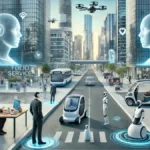A major controversy has erupted over a plan to transform the homeless into 4G hotspots at SXSW 2012 in Austin, Texas.
Indeed, 13 homeless individuals are reportedly hanging around the conference center wearing white shirts that read: “I’m _____, a 4G hotspot.”
Each is carrying a wireless device, which interested parties can access after remitting a donation via PayPal.
Saneel Radia of BBH New York – who masterminded the above-mentioned campaign – told BuzzFeed he was standing by his idea, even though he understood the inevitable backlash.
“The worry is that these people are suddenly just hardware. But frankly, I wouldn’t have done this if i didn’t believe otherwise… We’re very open to this criticism,” he explained.
“We have very few tools to help homeless, and one is rooted in print media. [Handing out] printed media [for donations] just seems outdated — the basic model seems to work. The street news model is very well praised by homeless organizations. Basically the seed was to try to help the homeless during SXSW. Our goal is to reinvent the newspaper model. It’s intentionally attention grabbing.”
Meanwhile, homeless advocate Mark Horvath weighed in on the controversy by noting that America was clearly in need of creative solutions and risk takers to fix a broken homeless services system.
“Homelessness is a serious crisis that effects us all… I believe social media and technology, and brand/cause relationships, can have a huge effect on fighting poverty and homelessness,” he opined.
“I am excited to see how this turns out and I encourage BBH to keep taking risks like this. You never know what will work unless you try.”
However, David Gallagher of The New York Times expressed concern over the BBH campaign.
“Getting a decent data connection at SXSW can be a challenge, given that it attracts what may be the most data-hungry crowd in the world. [And now] homeless people have been enlisted to roam the streets wearing T-shirts that say ‘I am a 4G hotspot,'” he wrote in a blog post.
“It is a neat idea on a practical level, but also a little dystopian. When the infrastructure fails us…we turn human beings into infrastructure?”






